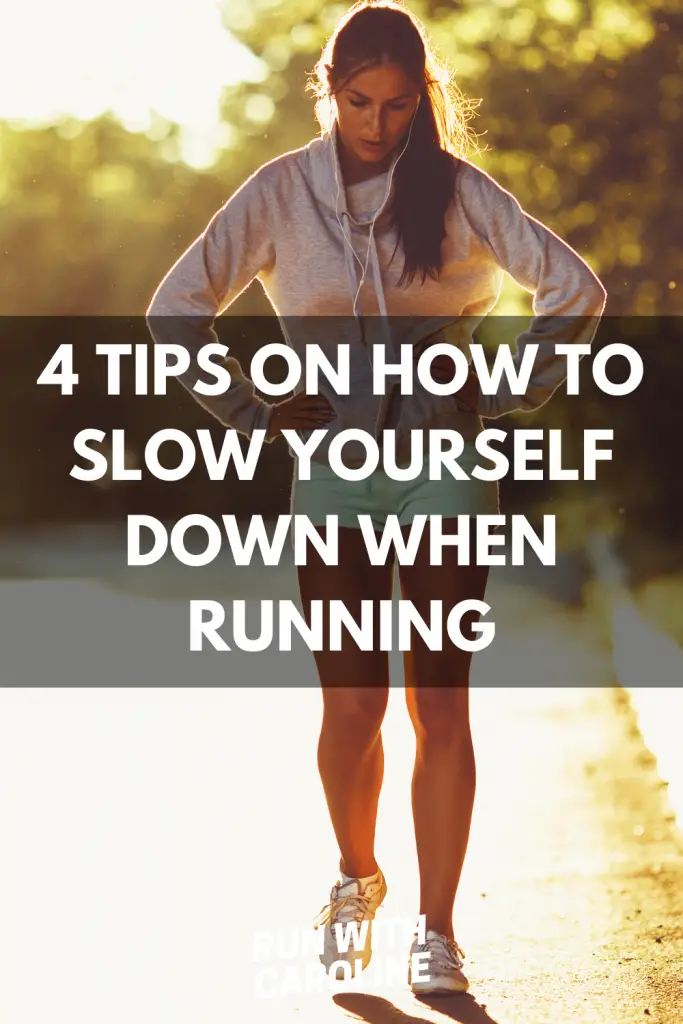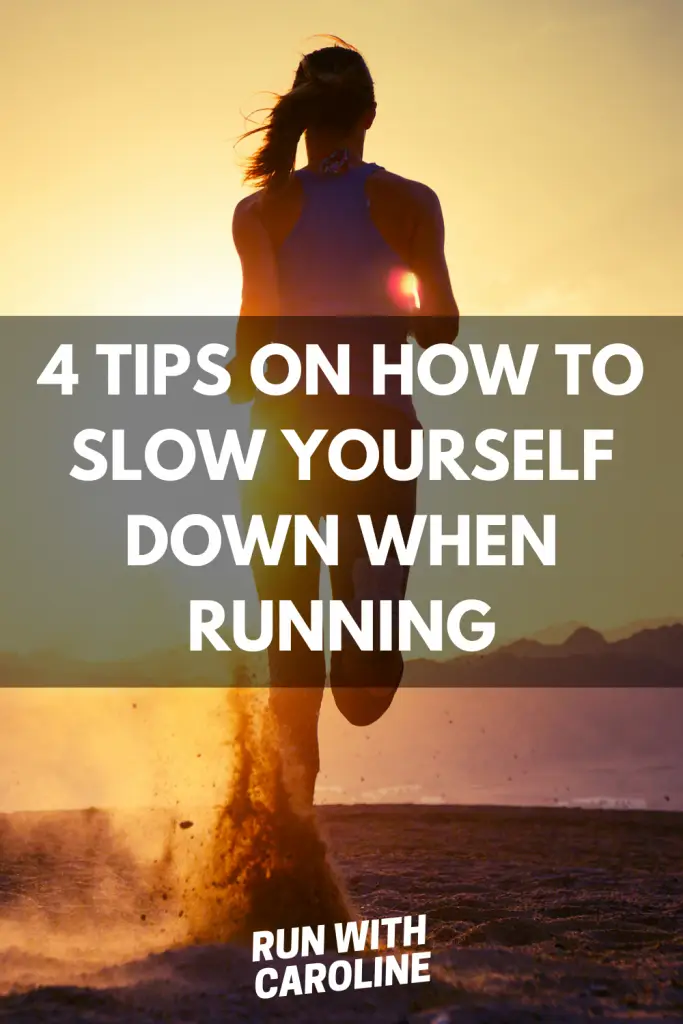It may sound counter-intuitive, but running slowly can actually help you run faster in the long term.
If you’re used to running at a certain pace or speed, you may find it difficult to actively slow yourself down when running.
After all, if you’re training for a race like a 10k and half marathon, the temptation is to focus on endurance and speed and nothing else.
Despite what you may think, running slowly doesn’t mean you have to run at a snail’s pace. It essentially means adopting your ‘easy run’ pace for the majority of your training runs.
An ‘easy run’ pace is running at a speed where you can comfortably hold a conversation without getting out of breath.
If you’re wondering how to slow yourself down when running, then in this guide we’ll explain the key benefits of easy running and our top tips on slowing yourself down.
In this guide we’ll explore:
- The benefits of easy running
- How to determine if you’re running too fast
- How to slow yourself down when running: 4 simple tips
Ready?
Let’s get going!

The benefits of ‘easy’ running
Many runners make the mistake of thinking that if they’re running easily, then they’re not getting much benefit.
When in fact easy running comes with a whole host of benefits.
When training for long runs like the half marathon and marathon, easy running is an essential way to build your endurance and stamina over long distances.
Easy running also helps to:
- Train your cardiorespiratory and muscular systems to work more efficiently
- Train your body to run with less effort
- Sustain your pace over long distances
- Build your slow twitch muscle fibres
Related: 8 ways to run for longer without getting so tired

How to determine if you’re running too fast
You may be wondering what the signs are of running too fast.
In other words, how do you tell if you’re running too fast and you need to slow yourself down when running.
You may be running too fast if:
- You run at your 5k or 10k race pace on your easy runs.
- Your heart rate regularly goes above 80% of your maximum heart rate.
- You struggle to run long distances at a sustained pace.
- Your legs feel tired, heavy or sore during or after a run.
- You feel out of breath and you struggle to hold a conversation while running.
- You feel fresh for the first half of your run, then start to lag during the second half or last quarter of your run.
Whilst you may not do all of the above when running too fast, these are some of the signs that you need to slow down and practice an easier pace on your runs.
Related: 6 simple ways to prevent heavy legs when running

How to slow yourself down when running: 4 simple tips
Calculate your easy pace
The key to slow yourself down when running is to identify your easy run pace.
Running coaches believe that 80 to 90 percent of your weekly runs should be run at an easy pace.
This means only 10 or 20 percent should be focused on high intensity sessions such as tempo running or interval training.
There are a few different ways to work out your easy run pace. The easiest and simplest is to use a running pace calculator.
Pacing calculators work by calculating your pace for different distances using your 5k race pace as the baseline.
Although there is a bit of a health warning with pacing calculators because they don’t take into consideration things like your gender, weight, running experience or fitness levels.
If you’d like a more precise way to calculate your easy run pace, then there are other methods to find out your pace:
- Heart rate
- Pace
- Effort
Heart rate
If you train using your heart rate then aim to run around 60-70% of your maximum heart rate.
To estimate out your maximum age-related heart rate, subtract your age from 220.
For example, for a 40-year-old person, the estimated maximum age-related heart rate would be calculated as 220 – 40 years = 180 beats per minute (bpm). The 60% and 70% levels would be:
- 60% level: 180 x 0.60 = 108 bpm
- 70% level: 180 x 0.70 = 126 bpm
This shows that your heart rate should remain between 108 and 126 bpm during your run.
Pace
As discussed above, you can use tools like pacing calculators to help you determine your easy run pace.
You can also work out your easy run pace by using your 10k race pace plus 2 minutes.
For example, my 10k race pace is around 7:45 minutes per mile, so my easy run pace should be around 9:45 minutes per mile.
Remember to aim for 60 to 70 percent of your maximum heart rate and monitor your pace throughout your run.
Effort
Effort is all about how you feel on your run. In the past, I have been known to ditch my watch and other bits of tech like my phone in order to really tap into how I am feeling on my run.
A slow, steady effort should feel comfortable and not strenuous. Really listen to how your body is feeling on your run and make adaptations if you feel you’re running too fast.
Running by effort takes time and practice, so if you’re just starting out then I suggest you try calculating your heart rate and pace first before relying solely on tracking your effort.
Related: How to pace your run

Increase your cadence
Cadence – also known as your stride rate – is the number of steps you take per minute (SPM) when running.
It plays an important role if you want to slow yourself down when running and maintain proper running form.
When trying to slow yourself down when running, the trick is to not let your cadence drop too much.
The recommended cadence for a slow, easy run is between 170 and 190 SPM. If your current cadence is lower than this, for example, below 165 SPM, then I recommend you work on increasing your cadence.
There are a number of ways to increase your cadence:
- Use a metronome app
- Imagine you’re running on ice
Use a metronome app
A good way to start increasing your cadence is to download a metronome app on your phone. I recommend using The Metronome app.
Set it for five steps per minute faster than your current cadence. For example, if your current cadence is 165, then set the metronome for 170.
Imagine you’re running on ice
Another simple way is to imagine you’re running on ice.
You cannot take long strides on ice so this will force you to take shorter steps. It also helps you to land on your mid-foot and under your centre of mass, which is really important when it comes to good running form.
When increasing your cadence, it’s important to do it in small, incremental steps.
You should try and avoid sudden increases in your stride rate, especially if it is the first time you have altered your cadence.
Running with a faster cadence may feel weird, even hard at first, but it will get easier over time.
Once your natural cadence falls within the 170-190 SPM range, you’ll probably notice that for most of all of your runs, your cadence will stay about the same, even though your pace will vary by 1-2 minutes per mile.
Related: How to improve your running cadence
Reduce your arm swing
Your arms help to dictate the speed at which you run. They also help to propel your body forward.
The more you drive your arms back, the more your legs will follow suit and help you run faster.
When you run slower, your arm swing should automatically adjust and in turn also go slower, but for some runners this doesn’t happen.
To keep your arms from swinging too far forward or back, visualise brushing your hips or hip bone with your thumbs when trying to run slower.
When you do this, your arms will have a longer distance to travel, so your arm swing will naturally slow down.
Related: Proper arm swing and 5 ways to improve it
Focus on footstrike
The way your foot hits the ground (also known as footstrike) plays an important role when it comes to both your running form and cadence.
As discussed earlier, by increasing your cadence, this will help you to run more slowly. A great way to improve this even further is to adopt a mid-foot footstrike.
Your current footstrike will fall into one of three categories:
- Heel footstrike
- Forefoot footstrike
- Mid-foot footstrike
Whilst there isn’t a clear favourite in the running community, a mid-foot footstrike will ensure the middle of your foot hits the ground first.
A mid-foot footstrike is beneficial when attempting to run more slowly as it will ensure the middle of your foot hits the ground first.
With your foot under your centre of mass, this helps to reduce your stride length and avoiding overstriding.
Related: Proper running footstrike and ways to improve it
More running tips:
- The ultimate head to toe guide to running form and technique
- How to run faster for longer: 5 top training secrets
- How to fit a run into a busy schedule
- 5 things I wish I’d known before returning to running - March 3, 2024
- Running 20 minutes a day: Benefits + how to start - January 27, 2024
- How to run your first 2 hour half marathon - January 16, 2024

Robbie
Sunday 8th of August 2021
Your max heart rate calcs are incorrect. The math is 220 minus your age. Not 180 minutes your age.